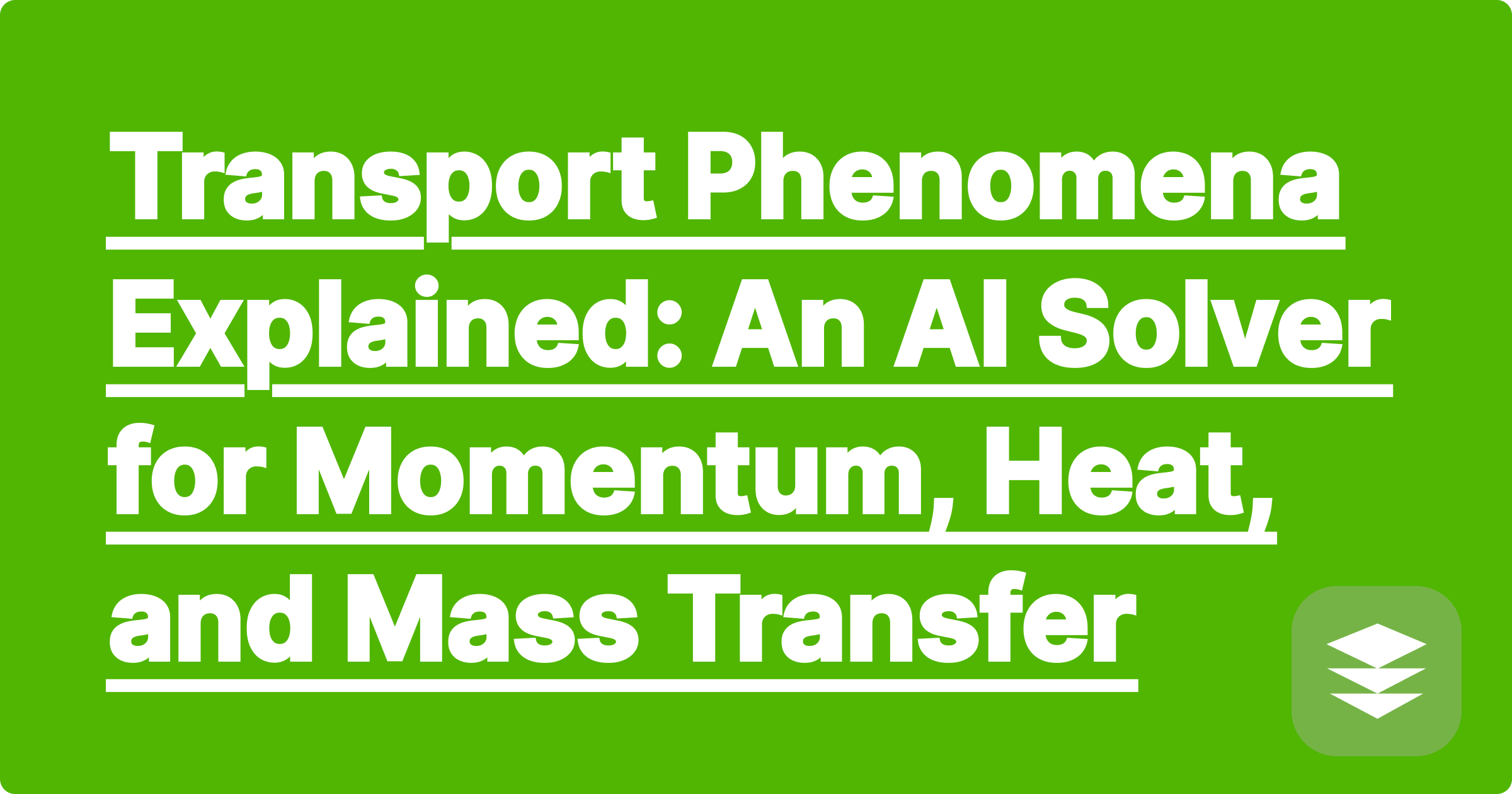
If you're a chemical engineering major, you've probably heard the whispers about "Transport Phenomena." It's one of the most challenging and mathematically intensive courses in the entire curriculum. It unifies three subjects—fluid dynamics, heat transfer, and mass transfer—under a single, powerful framework of conservation laws and differential equations.
The difficulty lies in the math. You're constantly setting up and solving complex shell balances and partial differential equations. The conceptual analogy between momentum, heat, and mass transfer is elegant, but the homework is brutal.
An AI transport phenomena solver can be your most valuable asset. A tool like GPAI Solver is designed to handle the complex mathematics, allowing you to get mass transfer calculation help (or heat, or momentum) while you focus on setting up the problem correctly.
The hardest part of any transport problem is the beginning: translating a physical situation into a mathematical equation.
Once you have the differential equation, you still have to solve it, which is a major challenge in itself.
An AI assistant can help you with both the setup and the solution.
An equation for a velocity, temperature, or concentration profile is one thing. Seeing it as a graph is another. After GPAI solves for the profile equation, you can ask it to visualize the result.
Your Prompt: "Plot the velocity profile V_x as a function of y from -B to +B."
The AI will generate a clean graph showing the parabolic shape of the fluid flow, making the mathematical result instantly intuitive. This is a critical tool for building physical understanding.
[Image: A clean, AI-generated graph showing a parabolic velocity profile between two parallel plates, with axes labeled 'y' and 'Velocity (Vx)'. Alt-text: An AI transport phenomena solver visualizing a velocity profile.]
The beauty of transport phenomena is the analogy between the three types of transport. You can use GPAI to reinforce this.
The AI can then explain the parallel between Fourier's law of heat conduction and Fick's law of diffusion, helping you master the core, unified concept of the course.
Transport Phenomena is a course about physical intuition, not just mathematical prowess. By using an AI to handle the most difficult integrations and calculations, you can focus on the crucial first step: correctly modeling the physical world. This allows you to develop the engineering mindset that is essential for your future career.
[Struggling with your transport phenomena homework? Try GPAI Solver today. Get step-by-step help with the toughest equations and visualize the results. Sign up now for 100 free credits.]
Visualizing Metabolic Pathways: An AI Guide for Biochemists
A Smarter Way to Do Your Genetics Homework: Punnett Squares and Pedigrees with AI
Chemical Engineering Thermodynamics: Beyond Steam Tables with AI
Transport Phenomena Explained: An AI Solver for Momentum, Heat, and Mass Transfer
How to Write a Molecular Biology Lab Report That Gets an A
Reactor Design and Kinetics: An AI Tool for Your Toughest Homework
The Ultimate MCAT Biology & Biochemistry Cheatsheet, Built by AI
From Lab Data to Publication-Ready Graphs with an AI Assistant
Process Control Homework Simplified with AI
How to Memorize Hundreds of Medical Terms with an AI-Powered Notetaker